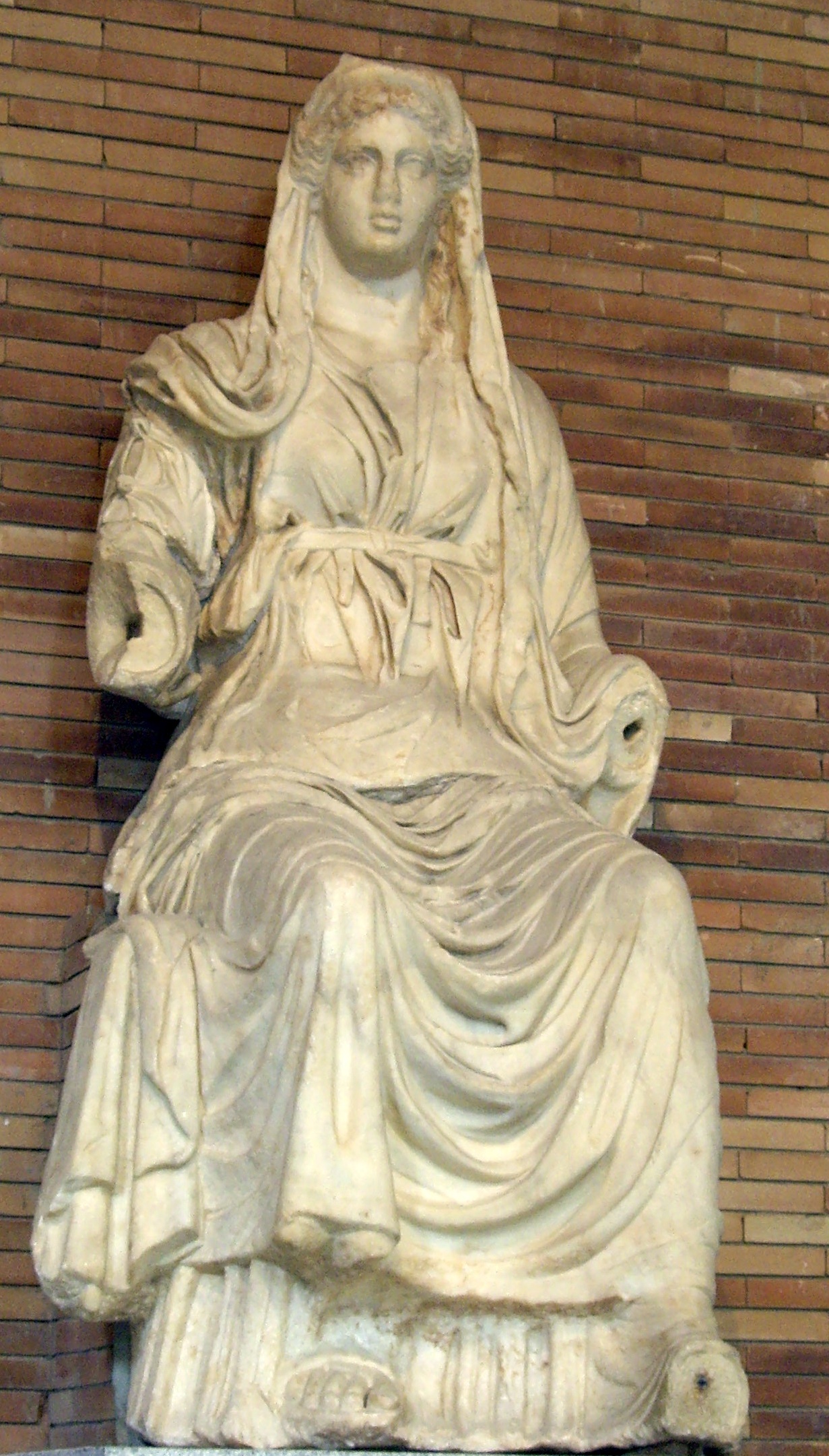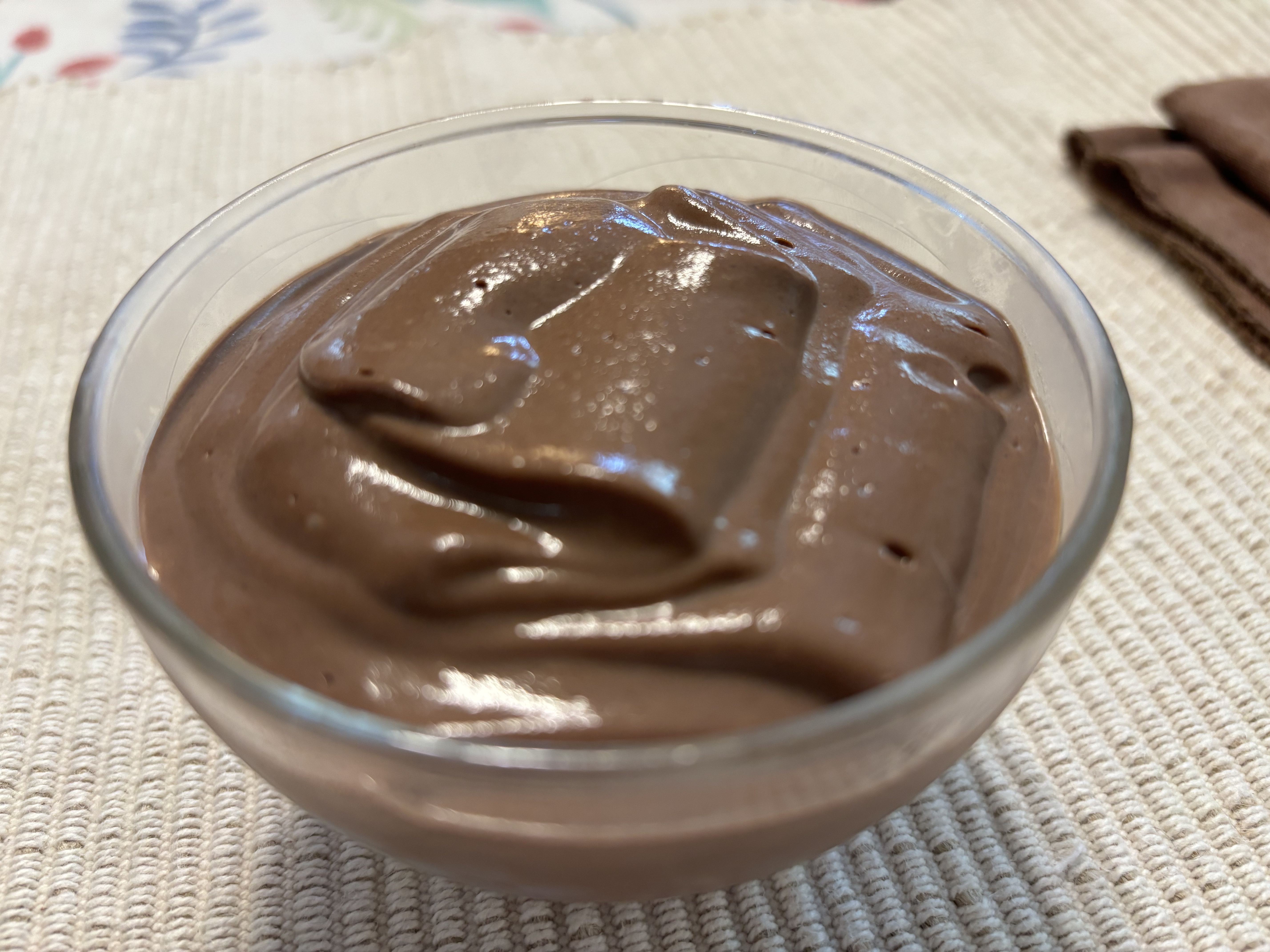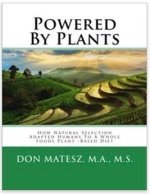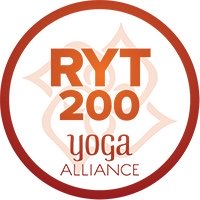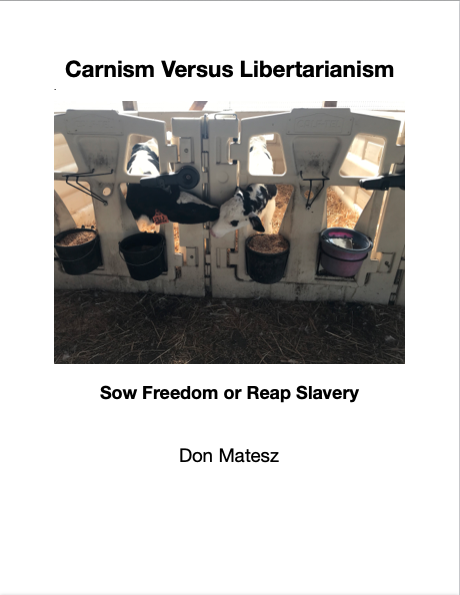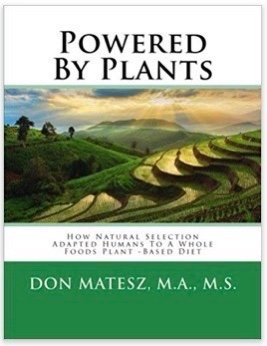The Ancient Roman Soldier Diet
The ancient Roman soldier diet fueled the high activity level of the men who defended and expanded the Roman empire. Roman soldiers and civilians ate the traditional Roman diet. The unified Roman empire lasted more than 300 years (27 BC–395 AD), and the eastern empire for more than 1000 years (AD 395-1453). Altogether the time-tested traditional Roman diet successfully maintained the vitality of the ancient Roman empire population and civilization for more than 1300 years. Even after the fall of the empire, the people continued to live on the traditional Roman diet.
If you wanted to eat a like an ancient Roman soldier, what would your diet look like? Would it be nutritious? Can we create a vegan version of the ancient Roman diet? You might be surprised. Let's take a look.
Ancient Romans Revered Whole Grains and Salt
|
Following in the footsteps of the Greeks, the ancient Romans named their goddess of food-bearing plants Ceres. Her name is derived from a proto-Indo-European root *ker- meaning “to grow,” which is also the ancient root word for kernel, cereal, create, creation, creature, and corn. The Romans honored whole grains with the name cerealis, which literally means “of Ceres.” Thus, Romans regarded cereals as foods of the Goddess. This contrasts with the many modern people following animal-based diets who regard cereals as unfit for human consumption. The Latin words for health and healthy, salus and salubris respectively, are derived from sal, salt. The English word “salubrious,” which means healthy or health-giving, comes from the Latin salubris. The Roman scholar and statesman Cassiodorus wrote “Some seek not gold, but there lives not a man who does not need salt.” Thus, the ancient Romans clearly regarded salt as health-giving. |
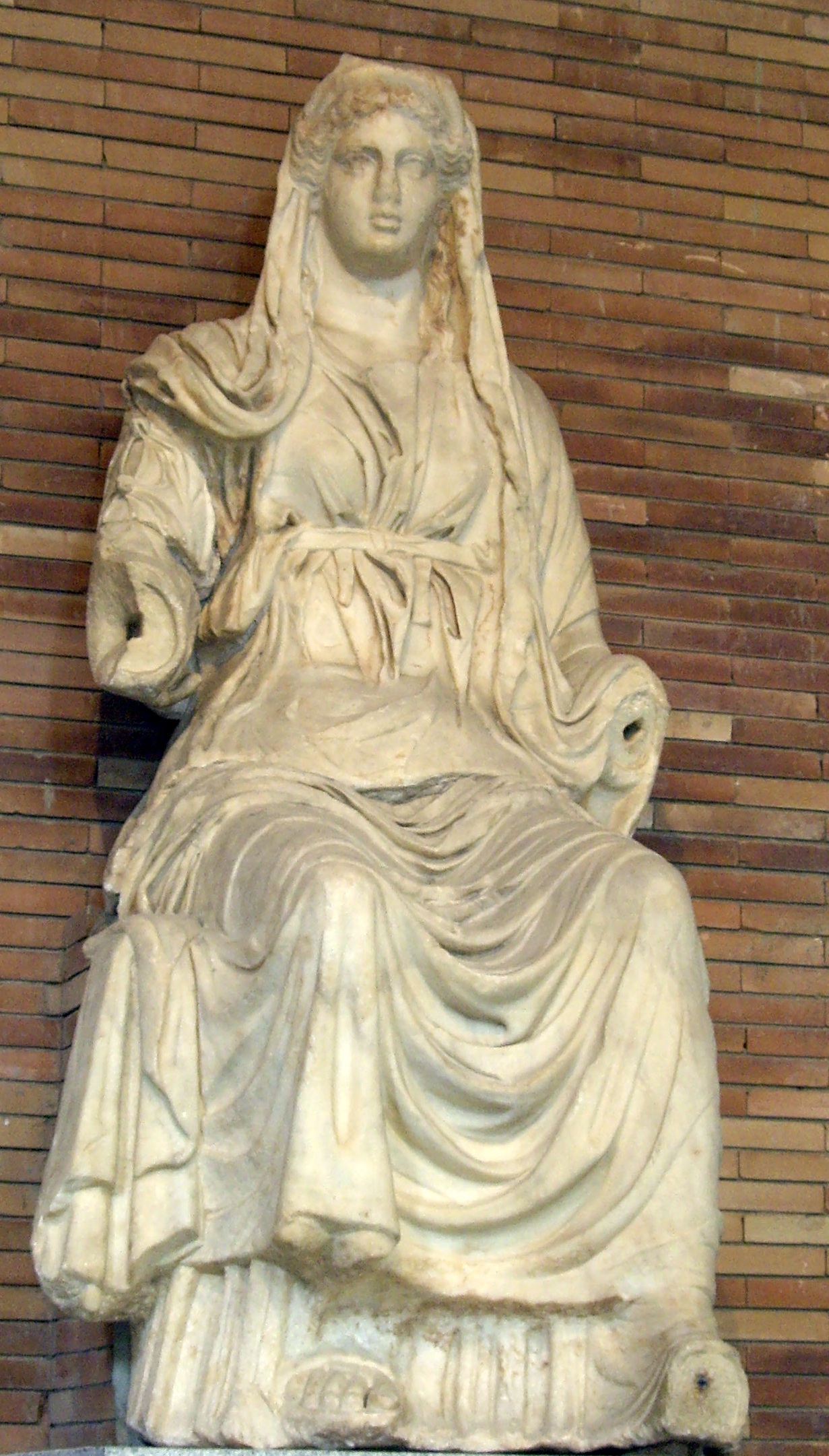 CERES OF MERIDA Image by Óscar Marín Repoller - User:Oscurecido.Original uploader was Cynwolfe at en.wikipedia - Transferred from en.wikipedia, CC BY 3.0, https://commons.wikimedia.org/w/index.php?curid=15749010 |
Ancient Roman Soldier Diet Was Grain-Based and Nutrient-Dense
Most ancient Romans, including Roman soldiers, ate a diet consisting primarily of cereal grains, principally whole emmer wheat.1 Eaten as either bread or porridge, emmer wheat served as the principal food of Roman civilians and soldiers.
Skeletal remains and historical records indicate that the average Roman soldier stood around 65-68 inches in height. A soldier walked up to 20 miles daily and carried gear and armor weighing 70-90 pounds. The soldiers engaged in heavy labor using heavy hand tools and weapons for long work shifts. Thus they had high energy expenditures and needed adequate protein.
From historical records, scholars have estimated that an ancient Roman soldier’s diet included a ration of about 815-850 grams of emmer wheat daily.2 An intake of 833 g (1.8 pounds) of whole wheat (flour) daily would provide 2882 kcal, which is at least 75% of the energy requirements for a physically active male. That quantity of whole wheat provides 126 g protein, 505 g total carbohydrate, 88 g fiber, only 23 g fat, 7.5 g of leucine and meets all essential amino acid requirements.
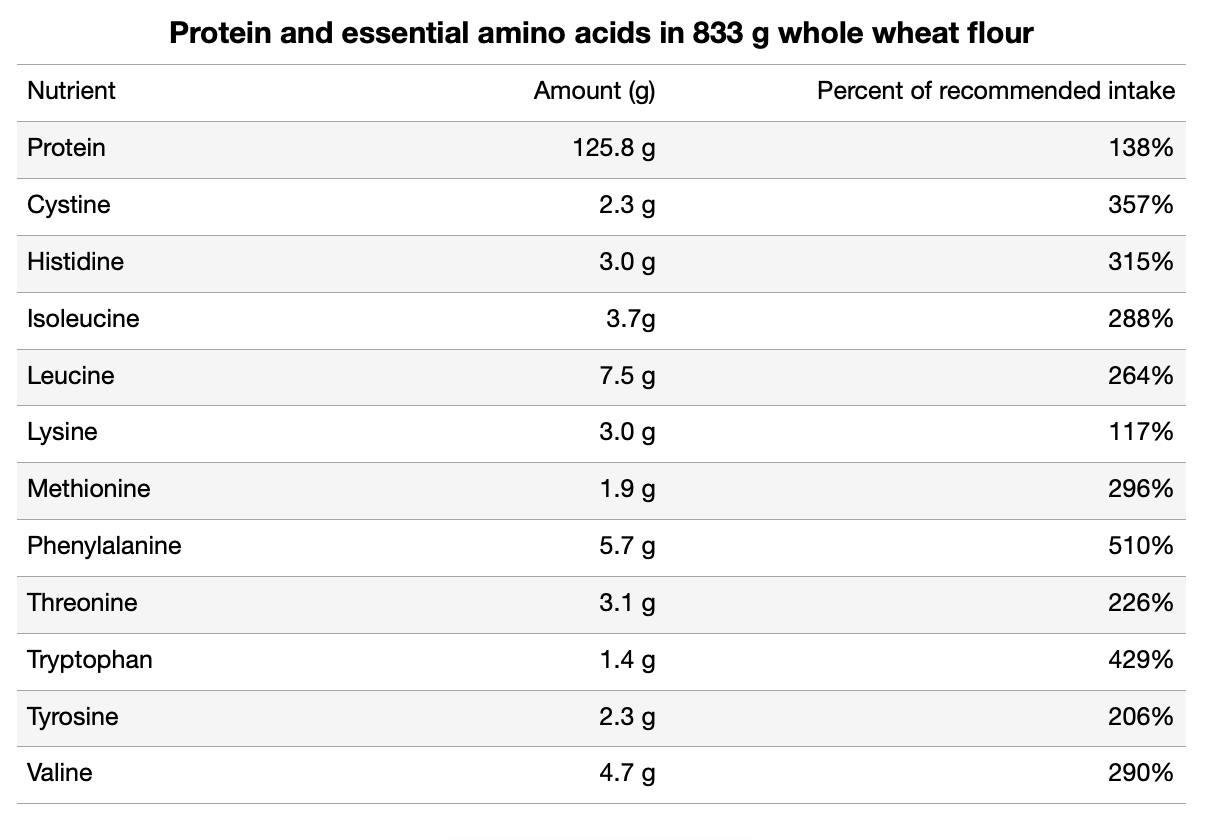
Data Source: NCCDB, Food #456559, via Cronometer.com
If the average Roman soldier stood 66 inches (1.68 m) tall and had a fat-free body mass index near the natural limit of 25 (apparently the maximum achievable without use of anabolic steroids11) then he would weigh about 78 kg (171 lbs) at 10% body fat.
The whole wheat ration of the ancient Roman soldier diet provided about twice the 0.8 g/kg RDA for protein for a 78 kg (171 lb) active male (RDA=62 g). Put otherwise, this whole wheat alone provides 1.6 g protein/kg body mass for a 78 kg (171 lb.) male.
The whole wheat ration of the ancient Roman soldier diet also satisfies a man’s requirements for thiamin (350%), niacin (289%), pantothenic acid (100%), pyridoxine (131%), copper (418%), iron (402%), magnesium (270%), manganese (1289%), phosphorus (419%), selenium (357%) and zinc (245%); nearly satisfies requirements for riboflavin (82%), choline (87%), folate (81%), and potassium (92%); and provides about a third of calcium requirements.

Data Source: NCCDB, Food #456559, via Cronometer.com
In the ancient Roman soldier diet the nutrients not largely covered by the wheat ration would have been calcium, sodium, chloride, and vitamins B12, A, C, D, E, and K. These needs were covered by the remaining rations or foraged foods including legumes, cabbage and other vegetables, olives, fruits, wine, salt, and comparatively minor amounts of salted animal products (primarily cheese, salted pig meat, and salted fish).
(In ancient Rome only the wealthy could regularly eat mammalian flesh, a luxury. Commoners were more likely to consume fish or birds.)
Roman soldiers and officials received a salt allowance called a salarium, and this Latin word is the root of the English “salary.” This may have given birth to the idea that a productive man is “worth his salt.”
Romans commonly prepared their vegetables by salting or brining them. The English word “salad” comes from the Latin salata, which literally means “salted.” Salata is short for herba salata “salted vegetables.” Salted vegetables such as pressed salads and pickles remain a popular dish in Asian cuisines.
According to Pliny the elder, the average ancient Roman consumed 25 grams of salt ––10 grams of sodium –– daily.3 For comparison, in 2013-2016, U.S. adults (aged ≥19 years) had a mean daily sodium intake of only 3499 mg/d, corresponding to 8748 mg salt.4 Thus modern U.S. adults consume only about one-third as much salt as ancient Romans.
A Minimalist Vegan Iteration of The Ancient Roman Soldiers' Diet
I have created a 3000 kcal vegan menu that, like the ancient Roman soldier diet, uses whole wheat as the principal food, to which I have added as little of other foods as needed to meet all nutrient requirements. I chose 3000 kcal because that is the estimated energy requirement of the average active male (soldier or athlete) aged 19-35. I used Cronometer.com to obtain this analysis.
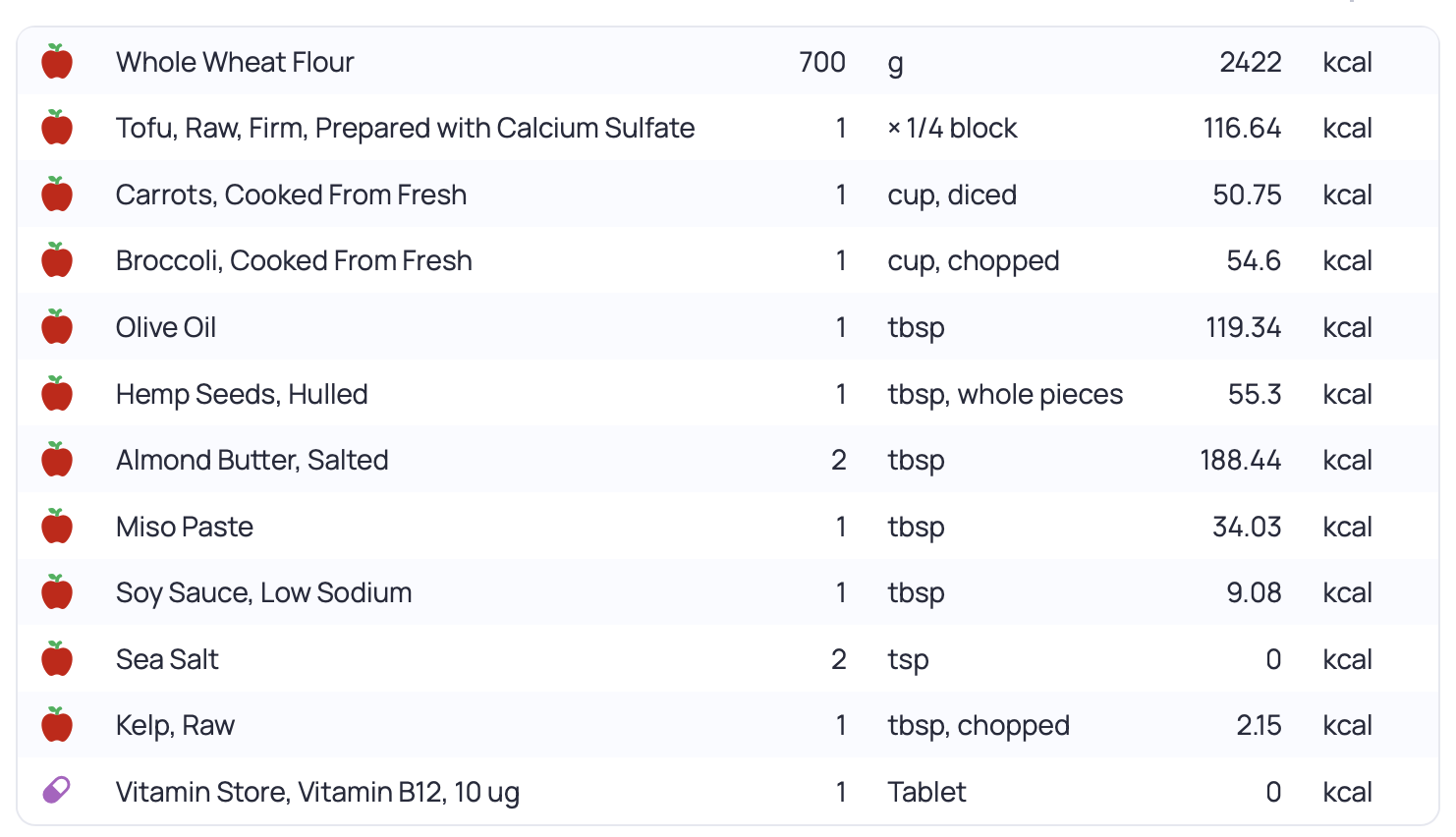
I approximated or modified the Roman soldier diet as follows:
- I used tofu as the legume product and as a protein- and calcium-rich substitute for cheese.
- For vegetables, I chose carrots (which were likely eaten by Romans) and instead of cabbage I chose broccoli, a cabbage derivative. Today these are relatively inexpensive and together they cover needs for vitamins A and C. Broccoli also contributes significant calcium and vitamin E.
- Instead of the various sea animals eaten by ancient Romans, I included a sea vegetable, kelp, which was available to Romans, to provide iodide, and hemp seeds for omega-3 fats.
- I chose olive oil instead of whole olives, because we can use it to cook or dress the vegetables.
- I chose almond butter because ancient Romans ate almonds, they are rich in calcium and vitamin E, and almond butter can be used as a topping for bread. Ancient Roman cuisine also included walnuts, hazelnuts, pistachios, pine nuts, chestnuts and sesame seeds.
- Although ancient Roman cuisine included a variety of seasonal fruits and berries, fresh and dried, I left them out of the menu because they are seasonal, and I did not need them to create an adequate diet.
- I left out wine because alcohol impairs one's judgment.
In this menu, whole wheat provides about 80% of the total calories (2422 of 3052), and carbohydrate, fat and protein provide, respectively, 67%. 18%, and 16% of calories.
In regards to macronutrients, this vegan adaptation of the ancient Roman soldier diet provides:
- 446 g net carbohydrates, mostly as starch (408 g), and 90 g of fiber (295% of recommended minimum).
- 63 g of fats, including 20 g omega-6 (146% of requirements) and 2.3 g of omega-3 (145% of requirements).
- 138 g protein, including all essential amino acids, and 8.8 g of leucine (299% of requirement).
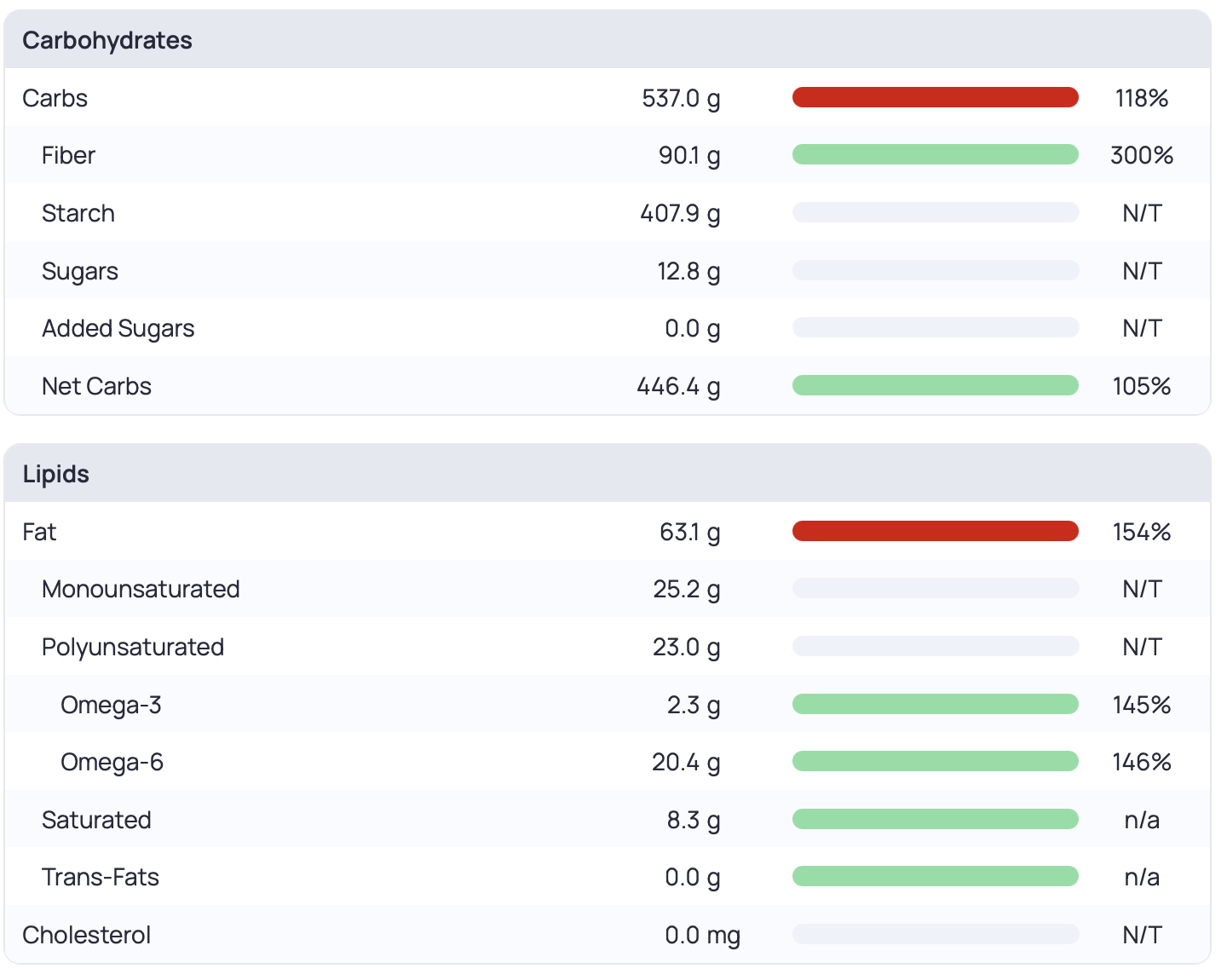
Olive oil is the third richest source of vitamin E in this menu, the first being whole wheat, followed by broccoli. The menu still contains only 8.3 g of saturated fat, which amounts to only 75 kcal, or 2.5% of total energy, well below the recommended maximum of 10% of energy from saturated fat. This illustrates that if one is sufficiently active it is not necessary to avoid all oils to meet recommended fat intake levels. Even at lower energy intake levels, one can still include oils, just in smaller amounts.
As mentioned above, this vegan version of the ancient Roman soldiers' diet provides 138 g of protein, which is 1.9 g/kg for a 72 kg (158 lb) man, 1.6 g/kg for an 84 kg (186 lb) man, and 1.35 g/kg for an 100 kg (220 lb) man. Thus it is a high protein diet for most men. Of the total mass of protein, the whole wheat provides 106 grams (79%), tofu provides 14 grams (about 10%) and the seeds, nuts and vegetables provide the remaining 18 g.
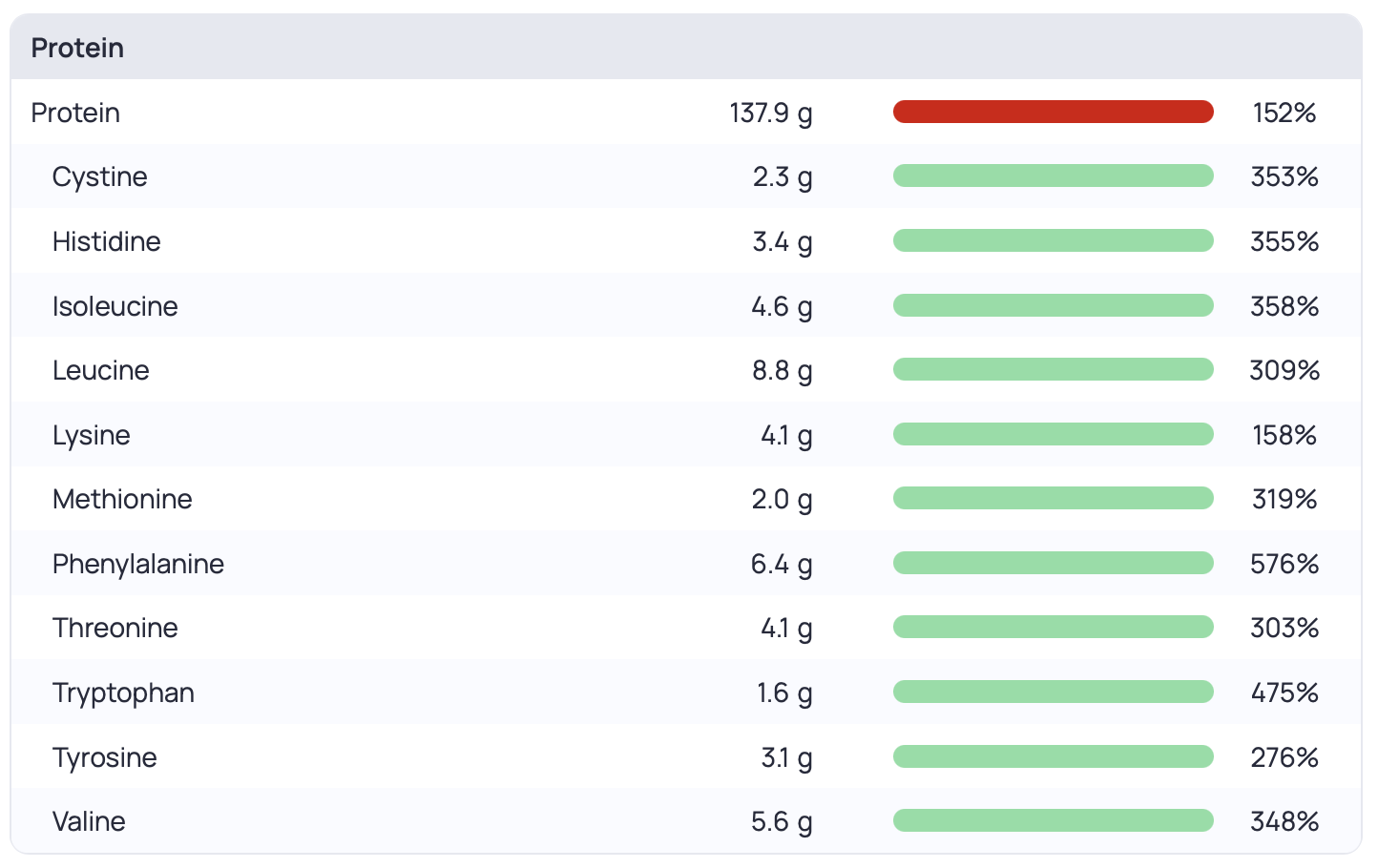
In this vegan approximation of the Roman soldier diet, the non-wheat foods easily provide the micronutrients not fully provided by the whole wheat, except for vitamin D, which is produced by sun exposure. In the absence of adequate sun exposure one can include a vitamin D supplement.
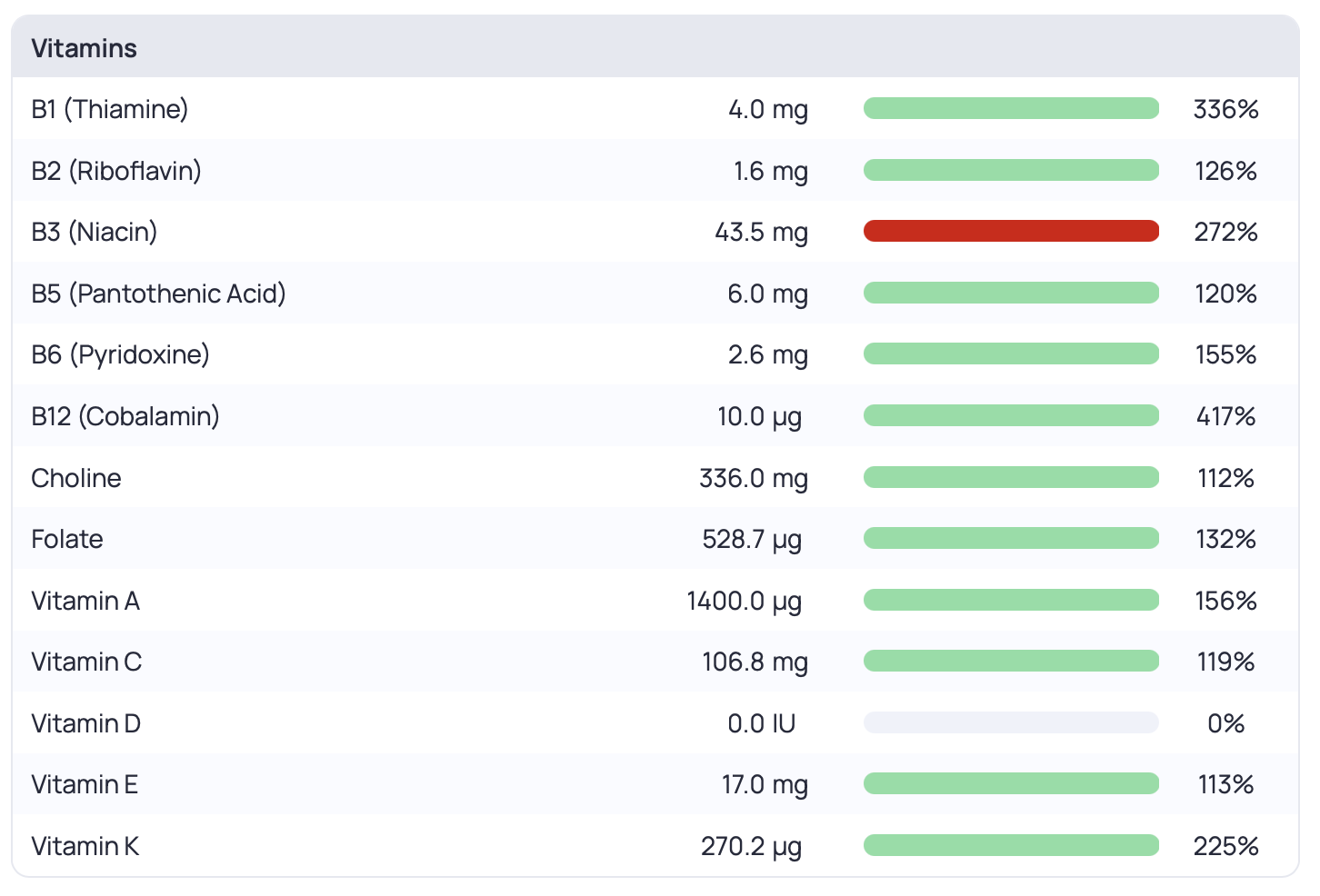
Some people will object that all of the vitamin B12 provided by this menu comes from the supplement, which they will claim is undesirable because artificial, not natural. Let me address this objection.
All vitamin B12 in existence is produced by microbes. The B12 in animal products comes from microbes in their food or in their guts. It is more efficient to eat the microbes directly. A vitamin B12 supplement is produced by farming microbes, harvesting them and putting the vitamin B12 in a convenient pill form. This is in principle no different from farming wheat to acquire all the nutrients it provides, then processing the wheat into bread, pasta, or cereals for convenience of consumption.
The word "artificial" means made or produced by human beings. All hunting, farming and food processing is done by human hands using man-made tools and techniques. The animal products that humans consume do not spontaneously occur in Nature; they are products of human actions including confining, selective feeding, selective inseminating, breeding, milking and killing of animals and butchering their carcasses. All of these operations are man-made; their end products are products of human actions. You will never find man-made cuts of meat, bottles of milk or cartons of eggs in Nature apart from human action. Even primitive hunter-gatherers eat man-made meat, because they use man-made tools to kill the animals and carve up the carcasses to produce the meat. Just as man uses trees to produce artificial wood and wood products, man uses specific animals to produce meat, milk and eggs that do not spontaneously occur in Nature apart from human intervention.
Similarly, man cultivates specific bacteria to produce vitamin B12. In other words, in practice a vitamin B12 supplement is no more artificial than any other food eaten by humans, and meat produced by human action is no more natural than a vitamin B12 supplement.
This menu satisfies all mineral requirements, including providing iron at 4 times requirements and zinc at 2.5 times requirements. I included kelp for iodide, but the Cronometer database has very sparse iodide data and does not include the iodide content of kelp. Kelp provides 2-4 mg iodide per gram.5 The Institute of Medicine recommends an iodide intake of 150 mcg per day for adults, and an upper limit of 600 mcg/d. Therefore, assuming ~3000 mcg iodide per gram of kelp, one needs only 0.05-0.2 g of kelp daily to meet requirements while avoiding iodide excess.

Ancient Romans including the Roman legions used a salted fermented fish sauce called garum as a seasoning. This habit may have spread fish tapeworms around the world.6 What you eat depends on your level of judgment. For the umami flavor we have far better vegan alternatives to garum, namely, salt fermented soybeans, in the forms of miso and soy sauce. As mentioned above, ancient Romans prepared vegetables by salting or brining them.
Since plant foods provide little sodium, sea salt, miso, and soy sauce provide the majority (5890 mg) of the 6000 mg sodium content of this menu, which is the equivalent of 15 g salt/d. Although this 10 g less than Pliny reported as typical for ancient Romans (mentioned above), unlike ancient Romans, many contemporary people erroneously believe that humans have no need for salt in the diet and would regard 15 g salt/d as both unnecessary and dangerous.
Salt consists of sodium and chloride, both of which are essential elements in human biochemistry and physiology. Humans need a sodium intake of about 68mg/kg body mass to maintain fluid volume, blood pressure, digestive efficiency, immune function and mineral balance.7,8,9 We have no scientific or historical evidence to support the idea that any ancient human population ate a salt-free diet.10
If one excludes the sea salt, miso and soy sauce from this menu, the whole plant foods remaining would provide less than 200 mg of sodium. This is less than half the estimated ~500 mg obligatory daily losses of sodium in sweat and urine on a salt-free diet, less than 25% of the Institute of Medicine's Adequate Intake level of 2300 mg sodium (5.75 g salt), and less than 10% of actual human sodium requirements (3000 to 5000 mg/d, i.e. 7.5 to 12.5 g salt per day).7, 8, 9,10 Therefore a 72 kg (158 lb) physically active male needs a daily intake of at least 12 g salt, an 80 kg (176 lb) male needs about 14 g, and a 90 kg (198 lb) male needs about 15 g. Excess salt is either stored in the bones and teeth or excreted in the urine, feces or sweat.
It bears mention that anyone who promotes a no-salt whole foods plant based diet is promoting a dangerously sodium deficient diet that has no historical precedent or scientific basis. Inadequate salt intake eventually leads to failure to thrive due to sodium and chloride deficiency. Due to the fact that whole plant foods are extremely low in sodium and chloride, people who attempt a salt-free whole foods plant based diet for a long period of time are very likely to suffer from mild to moderate hyponatremia and dysfunctions of the bones, teeth, and cardiovascular, nervous, muscular, immune, and digestive systems, all of which depend on sodium or chloride. Some will suffer also from mild to moderate hyperkalemia. Probably most people who follow salt-restricted vegan diets for a long time will eventually be attracted to animal-based diets to rectify their sodium deficiency.
Ancient Roman Soldier Diet Lessons
Ancient Romans highly revered whole grains and salt.
Whole wheat has a high protein content compared to some other whole grains like brown rice. Therefore a diet based on whole grain wheat can be quite high in protein, and need very little additional protein from legumes, seeds or nuts (let alone animal products).
Whole wheat has a high vitamin and mineral content, such that a diet providing 80% of energy from whole wheat can be nutritionally adequate with very little vegetables added, such as 1 cup each of cooked carrot and broccoli.
If one is physically active, one can include mostly unsaturated vegetal oils in modest amounts (0.5-1 tablespoons daily) and still have a diet providing less than 10% of energy from saturated fats and no more than 20% of energy from total fats.
Modern people consume much less salt than reported for traditional diets. Since sodium is an essential nutrient and whole plant foods are very poor sources of sodium, if one is eating a whole foods plant based diet one must add a significant amount of salt to meet actual sodium requirements. There exists no scientific or historical evidence that ancient humans ate a salt-free diet, or that a salt-free diet is best for health.
The ancient Roman soldier diet serves as a good example of a successful traditional diet based on whole grains. It gives us insight into how one can construct a nutritionally adequate vegan diet based on whole grains, vegetables, seed, nuts, fruits, microbes and salt.
Notes
1. Armstrong J. Diet and Nutrition in the Roman Republican Army. Chapter 5 in: Brill’s Companion to Diet and Logistics in Greek and Roman Warfare. Edited by John Donahue and Lee L. Brice. Brill, 2023. ISBN: 978-90-04-68661-8. Pages 126-151. <https://doi.org/10.1163/9789004687189_007>
2. Ibid.
3. Ritz, E. (1996). The history of salt--aspects of interest to the nephrologist. Nephrology Dialysis Transplantation, 11(6), 969–975. doi:10.1093/oxfordjournal
4. Wallace TC, Cowan AE, Bailey RL. Current Sodium Intakes in the United States and the Modelling of Glutamate's Incorporation into Select Savory Products. Nutrients. 2019 Nov 7;11(11):2691. doi: 10.3390/nu11112691. PMID: 31703311; PMCID: PMC6893472.
5. Aakre I, Solli DD, Markhus MW, Mæhre HK, Dahl L, Henjum S, Alexander J, Korneliussen PA, Madsen L, Kjellevold M. Commercially available kelp and seaweed products - valuable iodine source or risk of excess intake? Food Nutr Res. 2021 Mar 30;65. doi: 10.29219/fnr.v65.7584. PMID: 33889064; PMCID: PMC8035890.
6. MITCHELL PD. Human parasites in the Roman World: health consequences of conquering an empire. Parasitology. 2017;144(1):48-58. doi:10.1017/S0031182015001651
7. Strazzullo P, Leclercq C. Sodium. Adv Nutr. 2014 Mar 1;5(2):188-90. doi: 10.3945/an.113.005215. PMID: 24618759; PMCID: PMC3951800.
8. Heaney RP. Making Sense of the Science of Sodium. Nutr Today. 2015 Mar;50(2):63-66. doi: 10.1097/NT.0000000000000084. PMID: 25972617; PMCID: PMC4420256.
9. Nishimuta M, Kodama N, Yoshitake Y, Shimada M, Serizawa N. Dietary Salt (Sodium Chloride) Requirement and Adverse Effects of Salt Restriction in Humans. J Nutr Sci Vitaminol (Tokyo). 2018;64(2):83-89. doi: 10.3177/jnsv.64.83. PMID: 29710036.
10. Mente A, O'Donnell M, Yusuf S. Sodium Intake and Health: What Should We Recommend Based on the Current Evidence? Nutrients. 2021 Sep 16;13(9):3232. doi: 10.3390/nu13093232. PMID: 34579105; PMCID: PMC8468043.
11. Kouri EM, Pope HG Jr, Katz DL, Oliva P. Fat-free mass index in users and nonusers of anabolic-androgenic steroids. Clin J Sport Med. 1995 Oct;5(4):223-8. doi: 10.1097/00042752-199510000-00003. PMID: 7496846.
12. Hirsch KR, Smith-Ryan AE, Trexler ET, Roelofs EJ. Body Composition and Muscle Characteristics of Division I Track and Field Athletes. J Strength Cond Res. 2016 May;30(5):1231-8. doi: 10.1519/JSC.0000000000001203. PMID: 27100166; PMCID: PMC4843842.
Recent Articles
-
Ancient Roman Soldier Diet
Apr 14, 25 05:19 PM
A discussion of the ancient Roman soldier diet, its staple foods and nutritional value, and a vegan minimalist version. -
High Protein Chocolate Tofu Pudding
Jul 01, 24 12:41 PM
A delicious high protein chocolate tofu pudding. -
Vegan Macrobiotic Diet For Psoriasis
Sep 05, 23 06:36 PM
Vegan macrobiotic diet for psoriasis. My progress healing psoriasis with a vegan macrobiotic diet. -
How Every Disease Develops
Aug 04, 23 06:22 PM
How every disease develops over time, according to macrobiotic medicine. -
Why Do People Quit Being Vegan?
Jun 28, 23 08:04 PM
Why do people quit being vegan? How peer pressure and ego conspire against vegans. -
Powered By Plants
Mar 16, 23 08:01 PM
Powered By Plants is a book in which I have presented a lot of scientific evidence that humans are designed by Nature for a whole foods plant-based diet. -
Carnism Versus Libertarianism
Dec 30, 22 01:55 PM
Carnism Versus Libertarianism is an e-book demonstrating that carnism is in principle incompatible with libertarianism, voluntaryism, and anarchism. -
The Most Dangerous Superstition Book Review
Nov 15, 22 08:46 PM
Review of the book The Most Dangerous Superstition by Larken Rose.
